Is It Easy to Travel to Japan
"By failing to prepare, you are preparing to fail." ~ Benjamin Franklin.
So, you're planning a trip to Japan? If you're anything like me, just the thought of preparing for a trip to Japan makes me want to scream it from the rooftops with excitement! However, I also understand that for some people even the thought of planning a trip to Japan alone can seem like a daunting (and overwhelming) task.
But with my fictitious magical crystal ball, I know you're going to be fine – I've got your back as I've planned countless trips myself and I love sharing my Japan travel tips with you. I adore exploring popular places as well as Japan off the beaten path. Just consider me your Japan trip planner!
As a self-confessed Japanophile, I enjoy constantly staying up-to-date with the latest news in the land of the rising sun. This is partially because I'm always planning a trip to Japan in the back of my mind to quench my never-ending bucket list, and I also like to ensure the information I provide to you here on my blog is as accurate as possible.
How to prepare for a trip to Japan
All too often in Japan travel planning groups and online forums I'm a member of, I see the same common mistakes tourists make over and over. They may know a small handful of things Japan is famous for, but that's it. Even once they've returned, they mention that their trip to Japan wasn't as perfect as they expected.
And I don't want this for you!
It's so easy to avoid disappointment with a little preparation beforehand, believe me! In this Japan travel guide, I'm going to outline everything you need to know for planning a trip to Japan and how to not look like a tourist so you can have the most amazing trip ever. Read on for more!
This guide for planning a trip to Japan will cover:
- How to prepare for a trip to Japan
- 20+ crucial Japan travel tips to know before you go
-
- Hire a pocket wifi or buy a 4G SIM card for your phone when visiting Japan
- Don't blindly buy a JR Rail Pass thinking all tourists need it
- Take time to read these Japan travel guide books
- When is the best time to visit Japan? Choose your season carefully
- Buy tickets in advance to popular activities
- Discover hidden areas with the expertise of a local guide
- Understand the rules regarding Airbnb in Japan before you book
- Know what to pack for Japan
- Plan to wander off the beaten path
- Learn the cultural do's and don'ts to not be an annoying tourist
- Find out what to buy in Japan
- Don't plan on rushing around to see everything
- Check if construction work will impact your visit to attractions
- Use HyperDia and Google Maps to plan your journeys
- Create a pre-planned Japan itinerary that allows some flexibility (or use mine!)
- Include both traditional and modern experiences to your tour of Japan
- Learn some basic Japanese words and phrases
- Take some JPY with you and withdraw more from ATMs when in Japan
- Don't even bother driving in Japan
- Check if you need a visa before you visit Japan
- Purchase travel insurance
- Sample timeline for planning a trip to Japan
- Common questions about Japan travel answered
This post contains some affiliate links, at no extra cost to you. I may earn a small commission if you click through and make a purchase.
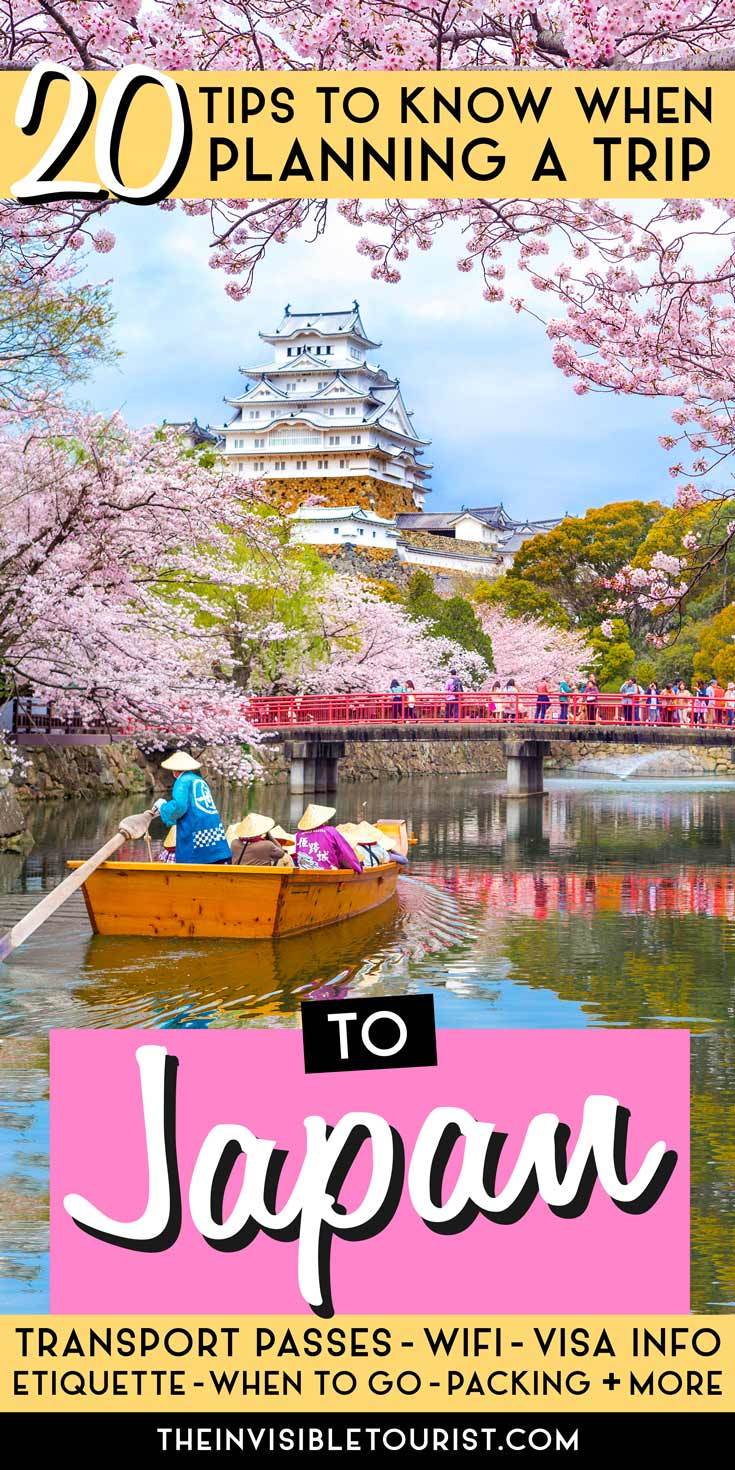
Do's & don'ts you need to know when traveling to Japan for the first time
Here's an interesting fact. According to a recent survey, over two-thirds of Americans have lied about how awesome their trip was.
Did you know the pressures of social media and keeping up appearances are said to have contributed to this? In an effort to capture amazing shots, it seems visitors are forgetting how crucial actual trip planning is, especially in a country like Japan.
So, I'm here to help you to plan your Japan trip! If video is more your thing, I've summarised this entire post in the clip below. Pssst, if you can't see it simply disable your ad blocker:
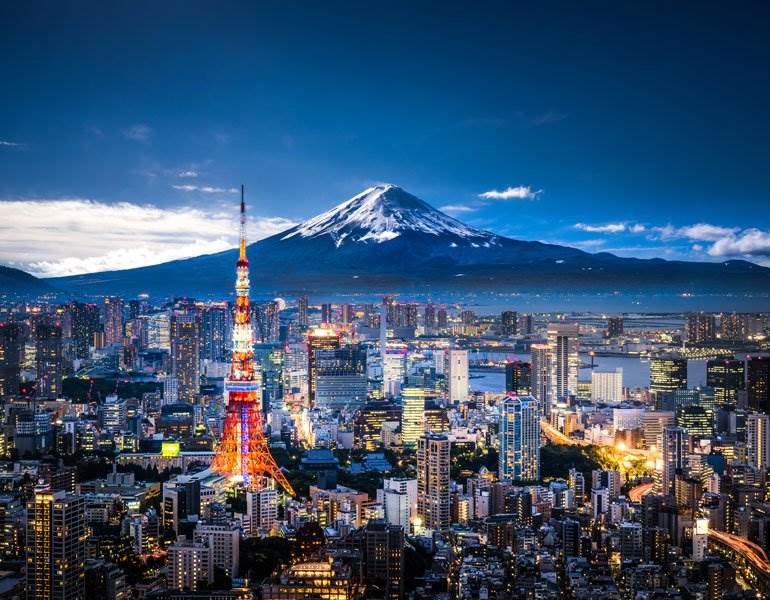
Anyway as I've mentioned above, the comments I see in online forums from disappointed visitors aren't so much about the country itself, but they were completely held back by their apparent lack of Japan trip planning before they stepped foot in the country. If only they knew these Japan travel tips before they arrived, they wouldn't have set unrealistic expectations.
The same thing surprises me about people who think Paris is completely overrated. Sure, if you rush around from one attraction to another without taking the time to understand its significance, or aren't prepared for the crowds or scammers, Paris is going to seem like a huge hot mess. The same can be said for any destination, especially Japan. Being prepared beforehand is key to a successful and enjoyable trip!
In saying all that, let's move on to my essential advice for preparing for a trip to Japan:
1. Hire a pocket wifi or buy a 4G SIM card for your phone when visiting Japan
Although there is free wifi at many hotels and at some restaurants, cafes and public spaces throughout Japan, it may be a good idea to hire a pocket wifi or buy a 4G Japan SIM card to use on an unlocked phone during your trip.
With the world so connected these days, many people like to stay in touch with family and friends via social media, use their phone GPS for directions and much more without fear of bill shock and data roaming charges.
With these services rising in popularity they've become quite inexpensive so you may find it convenient to carry your own. Being the organised country it is, if you book your pocket wifi in advance in Japan you'll be able to pick up and drop off at the airport of your choice. It's such a great system for tourists. You can book your pocket wifi in advance here, (and read my user's guide for how to rent and use pocket wifi in Japan).
I've also written a detailed answer to "is Klook legit?"if you want to learn more.
2. Don't blindly buy a JR Rail Pass thinking all tourists need it
I see almost every other travel blogger recommend buying a JR Railpass as something you ABSOLUTELY need to do when visiting Japan for the first time. Contrary to popular belief, this is simply not true. To be realistic, it depends on what you value as a traveller – saving time or saving money. It's hard to find a balance between both sometimes.
What no one seems to mention about the Japan Rail Pass
The Japan Rail Pass does not cover ALL types of shinkansen (bullet trains) in Japan and there are quite a few. For instance, as I explain in my two week Japan trip itinerary, I wanted to use the Nozomi shinkansen, the fastest in the country to make the most efficient use of my travel time.
Along with the Mizuho, Nozomi shinkansen are NOT covered by the pass. By buying individual Nozomi tickets I was able to save over half a day of travel time over the course of my 2 weeks in Japan, so I didn't mind outlaying the extra cost for the Nozomi trains.
Another thing to note is some privately owned rail lines (such as the Odakyu Express to Hakone) are also not covered by the Japan Rail Pass.
Consider if the pass is worth it w hen planning a trip to Japan
My suggestion to you is to calculate all the bullet train journeys you plan on taking, the amount of days you want to spend in each city and consider whether the cost of paying for the pass will be worth it for you.
When planning a trip to Japan, the Japan Rail Pass may not be worth the cost if you're only visiting one or two cities. You can compare costs of purchasing tickets versus the cost of the Japan Rail Pass by using Japan trip planning tool such as HyperDia or GoogleMaps. More on these down the page.
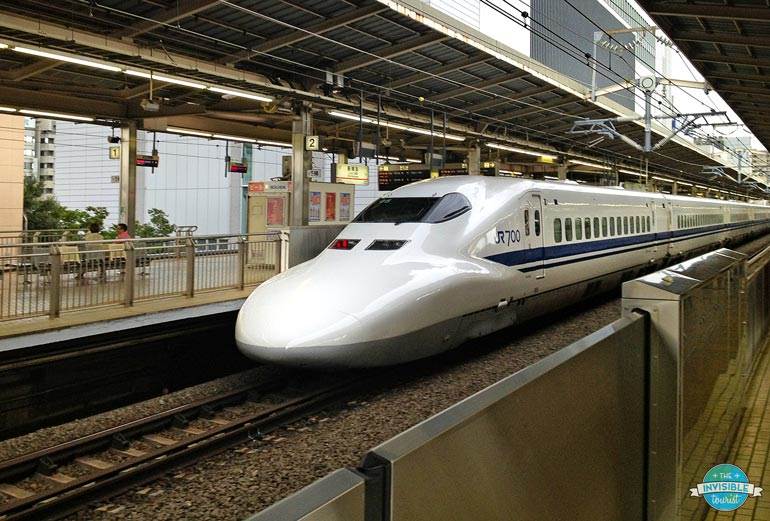
How to order a Japan Rail Pass
If you've decided that it's the right thing for you, make sure you buy a JR Rail Pass in advance here and leave enough time for it to be posted to you at home. These are more expensive once you arrive in Japan so make a note to get a rail pass before you go!
Speaking of rail passes for Japan, some people also prefer to pre-purchase a Suica card or Tokyo Subway Pass to use on the Tokyo Metro. Suica cards are reloadable and you can return them to receive a refund of your balance when you leave Japan.
3. Take time to read these Japan travel books for inspiration
Bookworms will have a field day! Of course, the Internet can be a great place to find inspiration for a trip. In saying that, sometimes flicking through a book can be even better! There are many types of travel books on the market, so it might be a little tough in deciding which ones to help you plan your trip to Japan.
I've written this detailed guide on my favourite Japan travel books to help make the choice easier for you. Complete with dog-earred pages, I review and share the most useful books I use when planning my trips to Japan alone, and where you can find them.

4. When is the best time to visit Japan? Choose your season carefully
Time for the million dollar question: When is the best time to visit Japan? Firstly, the "best" time is quite subjective because each season has is positive and negative traits. Secondly, it completely depends on your interests and preferences as a traveller. It's all down to the individual, really!
Personally, I believe visiting Japan during the low season is quite underrated (June – September). My first visit to Japan was August – September and the tourist crowds were quite minimal. A huge bonus these days!
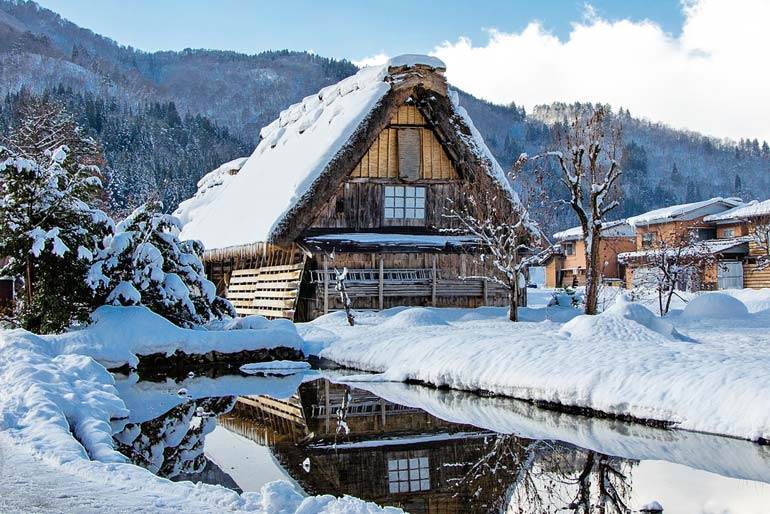
When choosing the best time to go to Japan, weigh up the pros and cons for each season:
Winter in Japan
Winter months are not usually busy in terms of sightseeing, but it is the ski season first and foremost. Cities will be less crowded as everyone is in the ski fields, so it's a good time to visit if you're not planning to ski. In saying that, New Year's is a huge celebration in Japan so expect crowds in major cites. December also boasts the highest chance to see Mount Fuji with a 77% likelihood due to the crisp winter air.
Spring in Japan
Cherry blossoms – need I say more?? While the climate is still fairly cool, spring in Japan is a wonderful (and VERY popular) time to visit. Although the overwhelming positive trait here is seeing the blossoms, the negative is the crazy amount of crowding in recent years, especially in Kyoto where the ancient city was not designed to handle such high visitor numbers at once. You also need to book accommodation well in advance – sometimes up to 12 months to ensure you get what you want.
TIP: If you're hoping to visit during the cherry blossom season, my detailed guide to spring in Japan is packed with tips for more places to go, alternatives to popular spots, what to pack and how to avoid the huge crowds!

Summer in Japan
The summer months mean typhoon season in Japan. Climate throughout much of the country ranges from warm to hot (depending on what you're used to at home!). This turns many tourists off. During my summer in Japan experiences, the rain came and went quite quickly, which was sometimes a welcome change to the heat.
The typhoon season has another drawback, the extra humidity means that if you're planning to see Mount Fuji, it's not the best time as she is likely to be blanketed in cloud.
In saying that, there are some great benefits when visiting Japan in summer. Tourist crowds are at their lowest. I also recently learnt that summer is actually the BEST time to visit the snow monkeys! I know it sounds contradictory, but you can find out more from my visit to Jigokudani Monkey Park in summer from Nagano!

Autumn/Fall in Japan
Stunning fall foliage starts to creep down from the north of the country, turning Japanese maples and other deciduous trees into brilliant hues of reds and oranges. The weather is moderate and beginning to cool down, meaning there are still crowds although maybe not as many as during the cherry blossom season.
When planning a trip to Japan, it also helps to know important dates
- New Year's:This extends from just after Christmas to the first week of January. Expect a lot of store closures and bullet trains to be very crowded as people travel home from the cities to celebrate. And remember, some ATMs take a holiday break from 1st – 3rd January, too – they won't dispense any cash during this time.
- Cherry blossoms: An immensely popular time to visit Japan. Plan a cherry blossom visit 6-12 months in advance (yes, seriously)! The season can vary slightly as it obviously depends on the weather conditions, but it's safe to say the season usually starts from the end of March to mid-April. Take a look at my guide for the best time to visit Japan for cherry blossoms for more info. Alternatively, to skip the crowds you can see blooms from as early as mid-February – find out how in my compete guide visiting Japan in spring!
- Golden Week: Celebration of four national holidays within 7 days. Commences on 29th April and runs until 5th May annually.
- Fall foliage: Another popular time to visit Japan when the Japanese maples turn red! The season ranges from September to November throughout Japan.
- Public holidays: Check this full list of annual public holidays in Japan.
- Silver Week: Occurs every five to six years when several Japanese holidays align in mid September to create a 4-day weekend. The next Silver Week will occur in 2026.
5. Buy tickets in advance to popular activities
In my timeline for planning a trip to Japan further down this page, I outline when is the best time to buy tickets in advance to popular activities and events. Below is a quick little list of tickets available to pre-purchase so you can ensure you don't miss out by leaving it to the last minute.
Japan has a unique cultural heritage and the Japanese are very proud to share this with visitors to their country. Embrace bar hopping with locals, a traditional tea ceremony, authentic cooking classes, theme parks and much more!
Tickets to buy in advance for Japan
Get organised ahead of time! Read my full list of cultural experiences in Japan, and pre-purchase these tickets before you arrive:
- The Robot Restaurant, Tokyo (note: this is closed until further notice)
- teamLab Borderless, Tokyo or teamLab Planets, Tokyo
Note: Available up to 2 months in advance to avoid disappointment - Sanrio Puroland, Tokyo (the land of Hello Kitty and friends)
- Tokyo SkyTree
- Hakone Free Pass
- Sumo Wrestling Tournament, Tokyo
Note: Sumo tournaments are only held a few times a year – more on this below! - Tokyo Disney and DisneySea
- Universal Studios, Osaka
- Studio Ghibli, Tokyo
- Legoland, Nagoya
- Authentic Japanese Cooking Classes with Locals
- Traditional Kyoto Tea Ceremony with Locals
- Hidden Bar Hopping Tour in Kyoto at Night
- Hidden Bar Hopping Tour in Shibuya at Night
As sumo tournaments are only held 3 times per year in Tokyo (January, May and September), a tournament may not correspond with your trip. If you're still keen to see the sumo, it's possible to book a small group tour to see the wrestlers perform their morning practice with this Tokyo Sumo Practice Tour.

6. Discover hidden areas with the expertise of a local guide
Researching your destination is one of the best ways to learn about it and what's there. But it's even more authentic to learn things not covered in guide books from locals who call the city their home.
Getting to know the destination with a local guide is one of my personal favourite experiences to add to an itinerary, especially when planning a trip to Japan. Not only do they share their insider secrets with you, but it's always a whole lot of fun learning about local culture!
Does bar hopping in Tokyo or Kyoto's hidden pubs sound like fun? Or experiencing a foodie tour of hidden eateries in Osaka? Maybe getting behind the scenes access to watch sumo wrestlers train? From fun experiences like these to historical walking tours and traditional experiences such as Japanese tea ceremonies, Arigato Japan & MagicalTrip have you covered – even for vegans and vegetarians (which can pose a challenge in Japan).
I've taken their small group tours in Japan and can highly recommend the experience. I wouldn't have known about special RED sake without my guide otherwise! The local guides are friendly, knowledgeable and keen to answer questions about their hometown to help enrich your trip. It's also a great way to meet other travellers and make some new friends.
Secure a friendly local guide before your trip
Read my detailed tour reviews or take a look at more exciting local experiences for:
- Tokyo
Bar Hopping, Street Food Tours, Cute & Crazy Food, Old Town Tokyo & more
Click here for Tokyo cultural experiences - Mt Fuji
Zen Experiences, Pub Hopping, Food Tours & more
Click here for Mt Fuji cultural experiences - Kyoto
Bar Hopping, Night Foodie Tours, Tea Ceremonies, Sake Breweries & more
Click here for Kyoto cultural experiences - Osaka
Bar Hopping, Dotonbori Foodie Tours, Market Walking Tours, Cycling & more
Click here for Osaka cultural experiences - Hiroshima & Miyajima
Bar Hopping, UNESCO Peace Walking Tour, Miyajima Hidden Hiking & more
Click here for Hiroshima & Miyajima cultural experiences
Virtual "Plan for Japan" online experience
I recently undertook Arigato Japan's "Plan for Japan" virtual experience and it is a great crash course for learning everything you need to know before your trip! Our host Ramona was lovely and gave us so many actionable tips. From useful apps to different types of accommodation, food and restaurants to selecting which airport to fly into, expert advice for communicating with locals, tips for travel passes and even what it's currently like travelling around day-to-day in Japan, the 1-hour course covers it all! Read my detailed review of more Japan virtual tours here.
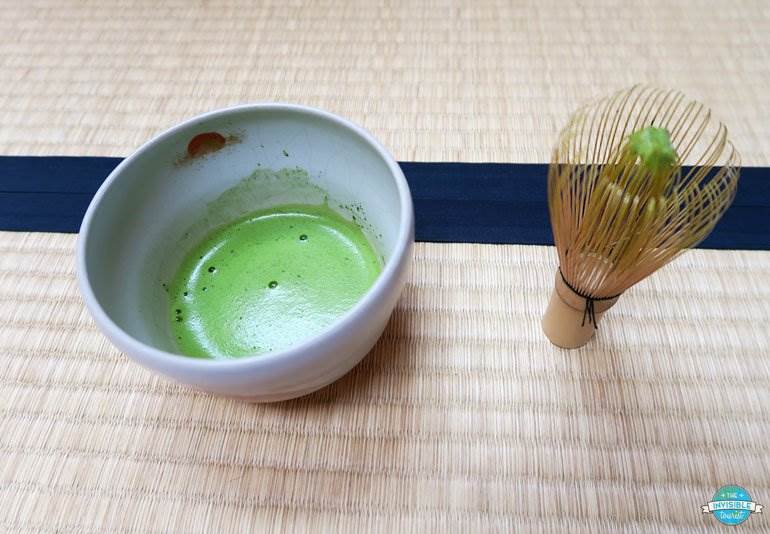
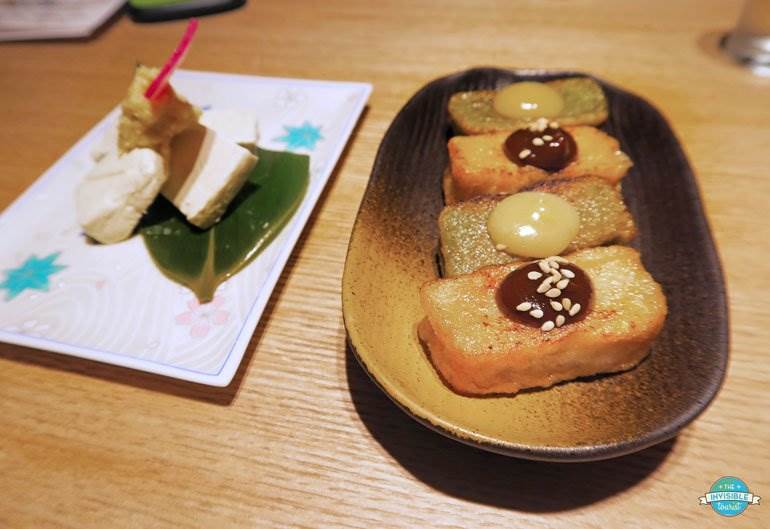
7 . Understand the rules regarding Airbnb in Japan before you book
Prior to June 2018, Airbnb and was an unregulated homestay service in Japan. Also known as minpaku, these rentals caused an overwhelming number of issues from noisy and inconsiderate tourists returning to their Airbnb in the wee hours and upsetting local residents, to driving up long-term rental prices for locals.
As Japan has quite a conservative culture, the recent influx of visitors seeking cheap accommodation led the Japanese government to heed all the complaints against Airbnb. Illegal listings were immediately shut down across the country, that is, listings that weren't registered with the government and hosts who did not obtain a minpaku licence. This was 80% of listings, and is said to have cost Airbnb $10 million.
Although legal if hosts can present their minpaku licence, for ethical reasons I personally do not recommend Airbnb in Japan. Although there are some exceptions to this (especially in rural areas where accommodation options are limited), the safer option is reputable hotels, hostels and regulated traditional accommodation options such as ryokan (traditional Japanese inn), minshuku (guest house) and shukubo (temple lodging), but of course the choice is up to you.
TIP: If you like the idea of staying in local accommodation but don't wish to use Airbnb's platform, these ethical alternatives to Airbnb may be an option for you!
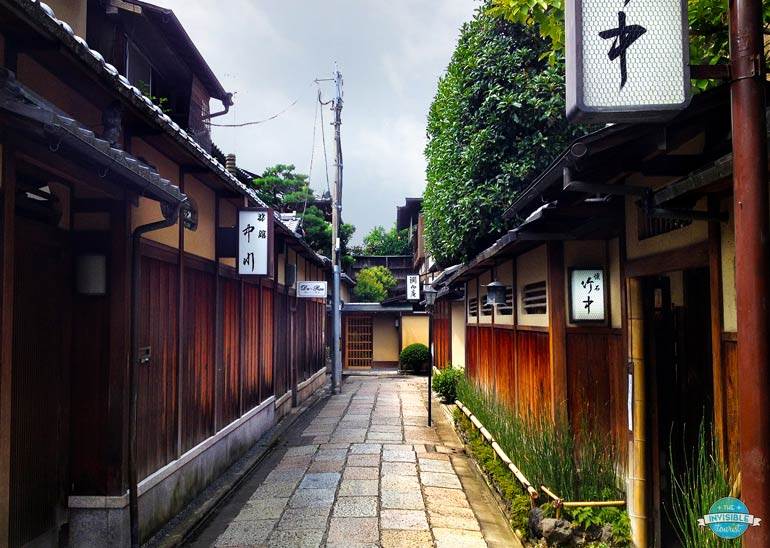
8. Know what to pack for Japan
Knowing how to prepare for a trip to Japan includes finding out what to pack (and what to leave behind). The climate between different seasons can vary drastically in Japan, so it's a good idea to learn the approximate temperatures for the time of year you'll be visiting and pack accordingly. If you're going to climb Mt Fuji or partake in hiking activities, it's important to pack the correct gear and footwear!
In terms of clothing, temperatures across the country are generally more pleasant during the spring and autumn months, summer can be quite warm with bouts of rain and snow can be expected in winter. It's a good idea to wear layers if you're visiting alpine regions of Japan because the days may be warm during summer but can get quite cool by night.
TIP: My detailed guide to what to pack for Japan has all your essentials covered, what to wear, plus what NOT to wear to better "blend in" – save the packing checklist for reference later!
Some items you may forget to pack for Japan
- Correct power adaptors for your electronics to be used in Japan
- Charging equipment for all your devices, spare camera batteries, memory cards, etc
- A neck pillow like this is also a great idea because Japan is a long haul flight for most of us. No one wants a crook neck after a 10+ hour flight!
- Investing in a set of packing cubes is also a serious game changer and makes temporarily living out of a suitcase a breeze. These babies help keep your belongings organised so there's no rummaging about necessary.
I would normally recommend packing a small umbrella but Japan has the BEST compact umbrellas (especially the Waterfront brand), so just buy one as a souvenir once you get there. Make sure you remember to pack your important travel documents such as your passport and Japan Rail Pass, too!
NOTE: By law, foreigners in Japan are required to carry their passport at all times (not just a copy). It's a good idea to take a photocopy/photo of the identification page of your passport and page that was stamped by Japanese immigration when you arrived and leave it in your hotel safe as a backup.
9. Plan to wander off the beaten path
This is the best way to experience Japan (and any country), regardless of season. But, it especially helps enrich your experience if you're visiting during a busy period. Crowds will be less of a bother and visiting out-of-the-way areas makes the experience more pleasant, rather than having to compete for space and photo opportunities with hoards of other tourists.
What I mean about exploring off the beaten path in Japan extends to within major cities and also exploring cities less frequented or undiscovered by tourists. Many tourists seem to stick to the Tokyo-Kyoto-Osaka route, which is fine as everyone wants to experience these incredible cities. But there is always so much more to a city or country if you can spend time exploring further outside a touristy bubble in different neighbourhoods.
Here are my personal itineraries and travel guides that help you discover more in Japanese city neighbourhoods beyond the main sights. How many are on your Japan bucket list?:
3 Weeks in Japan | Unique Places to Go in Tokyo | Secret Tokyo Hidden Gems | Kyoto Hidden Gems | Takayama Itinerary | Hida No Sato Folk Village, Takayama | Gero Onsen Itinerary | The Venice of Japan: Kurashiki | Lake Kawaguchiko, Mt Fuji, Oshino Hakkai & Gotemba Outlets | Kawagoe Day Trip | Kamakura Day Trip | Lesser-Known Landmarks of Japan | Best Onsen in Japan
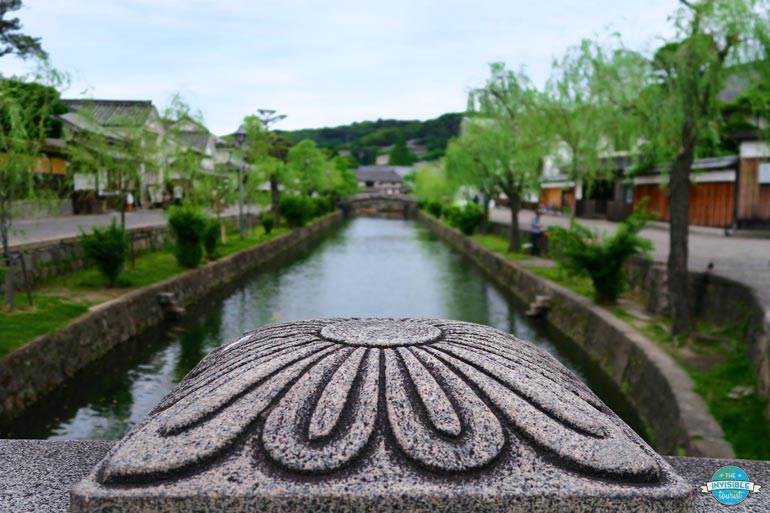


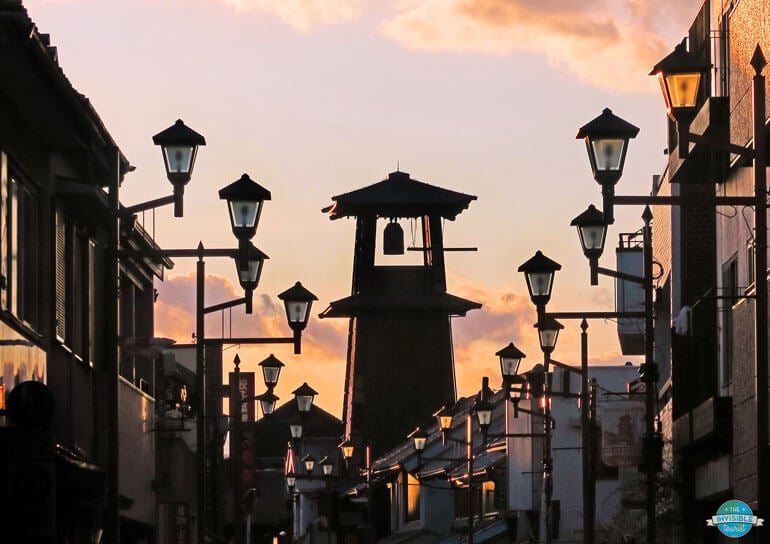
By exploring off the beaten track, you're not only able to escape crowds and have a more personable, authentic and unique experience. You'll also be able to bring your tourist dollars (read: yen) to less-popular areas that are set to benefit from it. Local businesses will love you!
For instance, during my first trip to Japan I was able to escape crowds and have several temples (almost) all to myself. When planning that Japan trip, I researched some hidden gems in Kyoto, hidden gems in Tokyo and how to get to them!
Some less-visited destinations in Japan include Kanazawa, Takayama, Naoshima Island, Fukuoka, Kyushu and Hokkaido, to name a few.
10. Learn the cultural do's and don'ts in Japan to not be an annoying tourist
Japan has many unique cultural differences that surprise visitors who weren't aware beforehand. I won't go into too much detail here about these differences because I believe these are do's and don'ts for when you're actually IN Japan, not in the overall trip planning phase (which is where you are at now).
The recent issue of overtourism sweeping cities like Kyoto, Nara and Miyajima inspired me to dedicate an entire article to Japanese etiquette so be sure to take a look once you're done here.
Find out the correct chopstick etiquette, what NOT to do if you see a geisha, why you need to carry socks or slip on shoes, how to be behave like Japanese people on public transport, info about the toilets, tipping and more. It's a handy guide to keep as reference so you don't do something offensive you weren't aware of!
TIP: Japanese people are some of the most polite in the world, so please remember to return the favour.
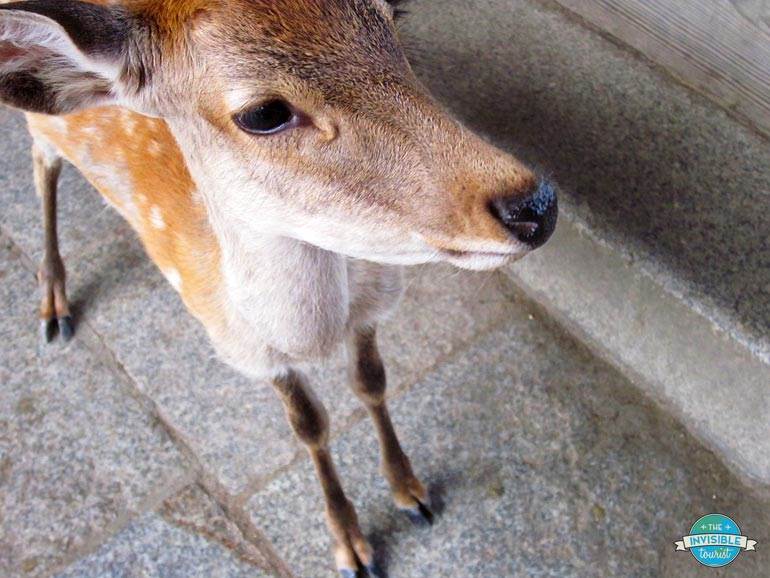
11. Find out what to buy in Japan
There are so many interesting and unique souvenirs from Japan, it can be overwhelming to know what to buy! Aside from the obvious things Japan is famous for such as anime, electronics, matcha green tea and a crazy array of snacks, many other Japanese souvenirs are traditional and have special meanings associated to them.
My guide to what to buy in Japan goes into detail about traditional souvenirs from Japan, their meanings and where you can find them. I've also written about the must-have Japanese snacks that need to make it into your suitcase, and how to get Japanese snacks delivered to your door after your trip!
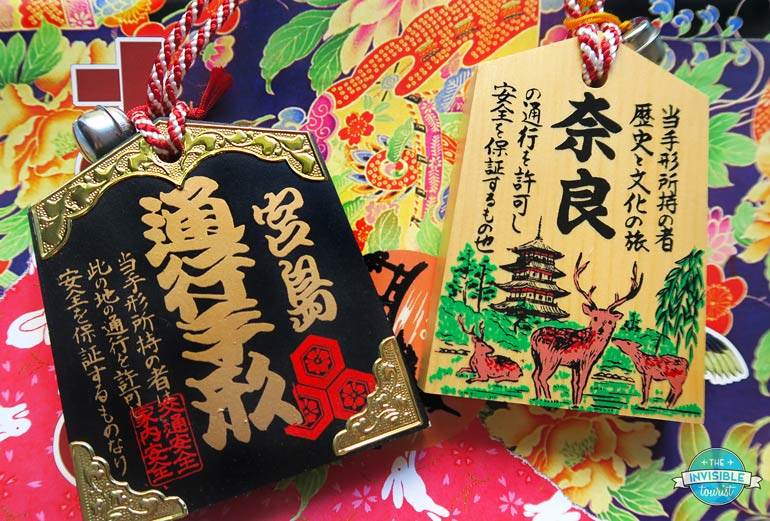
12. Don't plan on rushing around to see everything
TIP: Compared to other countries like the United States and Australia, Japan seems to be a relatively small island nation where it won't take long to get around. This is a pretty common misconception!
Japan is quite mountainous in parts meaning public transport options between cities may seem short on a map as the crow flies, but in reality can be several hours away by bus or bullet train. Take this into account when planning out your Japan trip itinerary.
Another common mistake tourists make when preparing for a trip to Japan is underestimating the distance not only between cities but attractions within those cities.
Kyoto is a perfect example of this where famous must-visit temples such as Fushimi Inari, Kinkaku-ji Golden Pavilion and Arashiyama Bamboo Forest are almost on complete opposite sides of the city with limited public transport options between them. The same can be said for many neighbourhoods in Tokyo due to the enormity of the city.
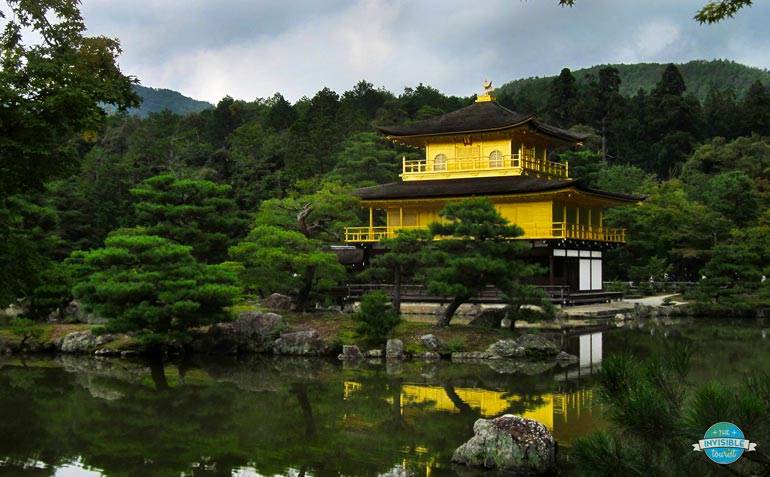
TIP: In a nutshell, allow more time than you think you'll need to enjoy your first time in Japan at a relaxed pace.
So often in the Japan trip planning forums I see tourists complaining they're tired from rushing around the place and not having enough time to see everything they wanted. Be realistic by planning your days accordingly so you can enjoy your Japan trip in a relaxing way.
No one wants to be exhausted by the end of the day from dashing around to get photos of something before quickly hurrying off again!
13. Check if construction work will impact your visit to attractions
Did you know that one of Japan's most iconic and most-photographed attractions is undergoing reconstruction efforts this year? The Grand Torii Gate overlooking Itsukushima Shrine, Miyajima, it has been covered by scaffolding since June 2019 and will be until about December 2022. It was due to be completed by the 2020 Olympics but has since been delayed.
Be sure to take a look here to see if any major construction works are going to affect sites you wish to see.
TIP: Speaking of Miyajima, it's a good idea to check the tidal information for the day of your visit. I've covered this and more information in my Hiroshima to Miyajima travel guide.
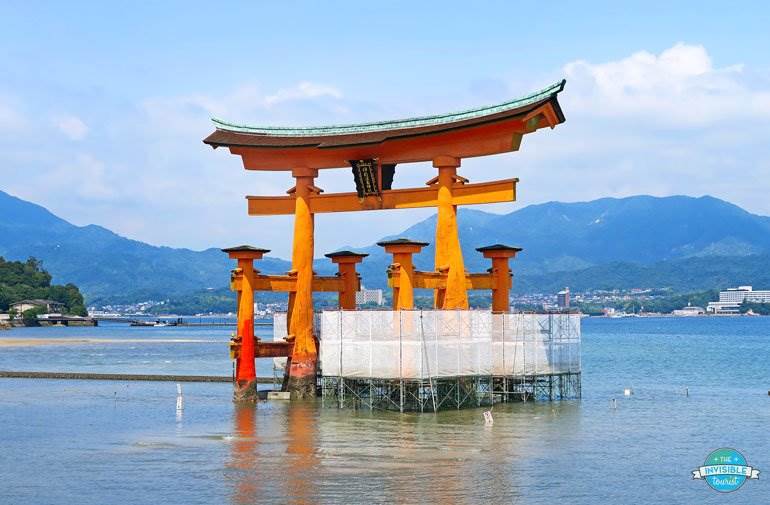
14. Use Google Maps and HyperDia to plan your journeys
Google Maps makes is ridiculously easy to plan your trip to Japan. Not only does it display travel alternatives such train, bus, car, cycling, walking and flights. It also goes into detail about the exact train lines, costs, platform and travel time, too!

HyperDia works in a similar way to the above Google Maps feature. It also has an downloadable app for Android devices from the Google Play store.
NOTE: As of March 2022, HyperDia no longer includes the option to check for trains that accept the Japan Rail Pass or provides timetable data. You can try Japan Transit Planner and click the "Hikari" train option if using a JR Pass. Locals also use an app called NaviTime to plan their trips.

Important new rules regarding oversized luggage on bullet trains
Speaking of planning your journeys, you may need to reserve a seat on the bullet trains with an oversized baggage area, or have your luggage forwarded to your next destination rather than just showing up.
With the rise in popularity of tourists using the Japan Rail Pass on the Tokaido-Sanyo-Kyushu shinkansen, the trains became very overcrowded and there was not enough room for dozens of huge suitcases.
As of May 2020, JR Central announced new travel restrictions on luggage. If your suitcase has combined dimensions of over 160cm, you'll need to reserve your seat on the train in advance. Tickets will not cost more if you reserve the oversized baggage area at the ends of each carriage. More info from JR Central.
TIP: Alternatively, you can forward your luggage to your next hotel using Yamato Transport for a fee (approx JPY 4200). This can be done at your hotel's reception and can be arranged for same-day delivery depending on the area.
15. Create a pre-planned Japan itinerary that allows some flexibility (or use mine!)
I absolutely adore being a Japan itinerary planner! There are many destinations where it's possible to just "wing it" as a traveller, but Japan isn't one really of them. You'll be more confident and make the most of your trip by being prepared and having some flexibility in your itinerary.
If you're planning a trip to Japan and don't have the time to create a detailed yet flexible itinerary for Japan of your own, never fear as I've done all the hard yards for you! Feel free to follow along to my detailed Japan itineraries and travel guides that outline things to do, how to get around, where to stay, Japan travel tips and more. I've got you covered every step of the way!
16. Include both traditional and modern experiences to your tour of Japan
As I bang on about in many of my Japan itinerary planning guides, this country is able to blend past and present together in a an incredibly seamless way. It's quite amazing! In saying that, to make the most of your visit ensure you add both modern and traditional experiences to your Japan travel guide itinerary.
The below mini-list are some Japan travel ideas to get you started. Remember experiences in Japan certainly aren't limited to only these:
Traditional Japanese experiences
- Witnessing a sumo wrestling tournament
- Hiking pilgrimage routes such as Kumano Kodo on the Kii Peninsula
- Paying respect at temples and shrines while receiving your fortune
- Enjoying the beauty of each season such as cherry blossoms and fall foliage
- Staying in traditional accommodation such as a ryokan (traditional Japanese inn), minshuku (guest house) and shukubo (temple lodging)
- Eating traditional Japanese street foods in Old Town Tokyo
- Participating in traditional activities such as tea ceremony and wagashi making in Tokyo or traditional tea ceremony in Kyoto and seasonal festivals
- Enjoy a geisha show, tea ceremony, calligraphy and origami during a cultural experience at one of Tokyo's oldest shrines.
Modern Japanese experiences
- Interacting with futuristic robots at the Robot Restaurant or Dinosaur Robot Hotel, Tokyo
- Making plastic sample food in Tokyo
- Trying out a stay in a unique capsule hotel in Tokyo
- Experiencing the amazing speeds of shinkansen (bullet trains)
- Using vending machines that dispense almost anything you can think of
- Enjoying a visit to a themed café (please only choose ethical animal cafés if this is your thing!)
- Trying your luck at a pachinko parlour
- Wandering through modern art museumsand exhibitions like teamLab Borderless
- Finding hidden bars in Kyoto only locals know about
TIP: My full guide to modern & traditional Japan cultural experiences will give you even more ideas!
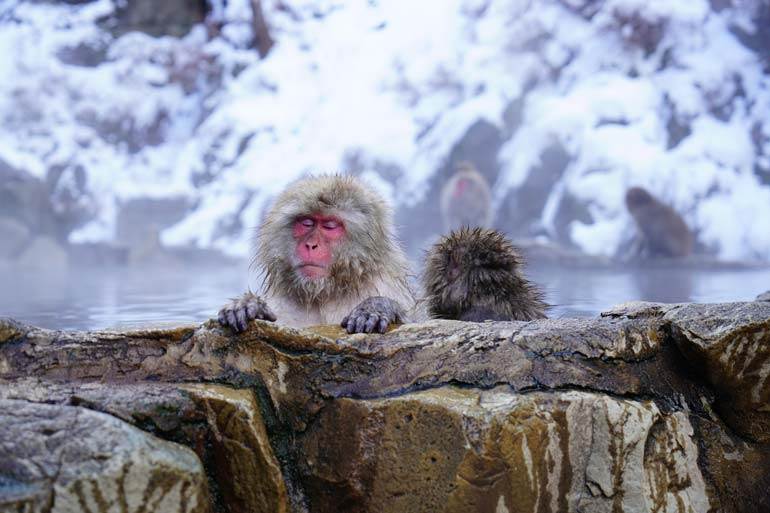
17. Learn some basic Japanese words and phrases
There's no better way to show respect to your host country than by greeting people in their native tongue. The language barrier between English speakers and Japanese is a concern I frequently see in online travel forums. I'm telling you, there's no need to worry! Learning a little Japanese for travel goes a long way and all you need to do is memorise a few words and some potential basic answers.
It's also immensely helpful if you're able to read a little Japanese when it comes to food so you know what you're ordering at restaurants or even buying a snack at a convenience store such as Family Mart, 7-Eleven and Lawson. It's not as hard as you think, I promise! I was intimidated for a long while but finally bit the bullet before I even started planning my first trip to Japan.
TIP: For your free downloadable cheat sheet and advice for learning the basics of the language quickly, take a look at my dedicated guide to Japanese for tourists. I've also shared my favourite beautiful Japanese words and their meanings to help you learn more about culture in Japan through language!

18. Take some JPY with you and withdraw more from ATMs when in Japan
Cash in king in Japan so it's likely you'll need to carry some to make purchases during your trip, especially with smaller stores, ticket machines and the like. Before you first land in Japan, it's a good idea to have some Japanese yen (JPY) with you as the foreign exchange centres located within the airports won't give you the best deal.
To receive the best exchange rate when you're out and about, withdrawing cash from the ATMs located within convenience stores such as Family Mart and Lawson are your best bet. I prefer to withdraw a chunk to save on international transaction fees and keep the majority in my hotel safe. Each day I take enough out of the safe that I'll need to get by and I use my credit card for larger purchases.
When paying by credit card, if there is the option to pay in your home currency, choose not to. You'll receive a better exchange rate if you opt to pay in Japanese Yen, believe it or not!

19. Don't even bother driving in Japan
The best way to tour Japan is not in a hire car. Especially if it's your first time in Japan, there isn't much need to drive. The public transport systems connecting major cities and even within the cities across the country are fantastic overall.
Driving in Japan may be challenging if you aren't used to driving on the left-hand side of the road. Additionally, hire cars and insurance can become expensive compared to train travel, parking at popular attraction can be difficult and the number of tourist-related car accidents has increased recently due to a lack of understanding of road rules and conditions by tourists.
If you think you'll be using taxis a lot in Japan, it might be a good idea to have the name of your hotel printed out in Japanese, or readily available on a map on your phone to show the taxi driver so there's no miscommunication or mistakes about where you need to go.
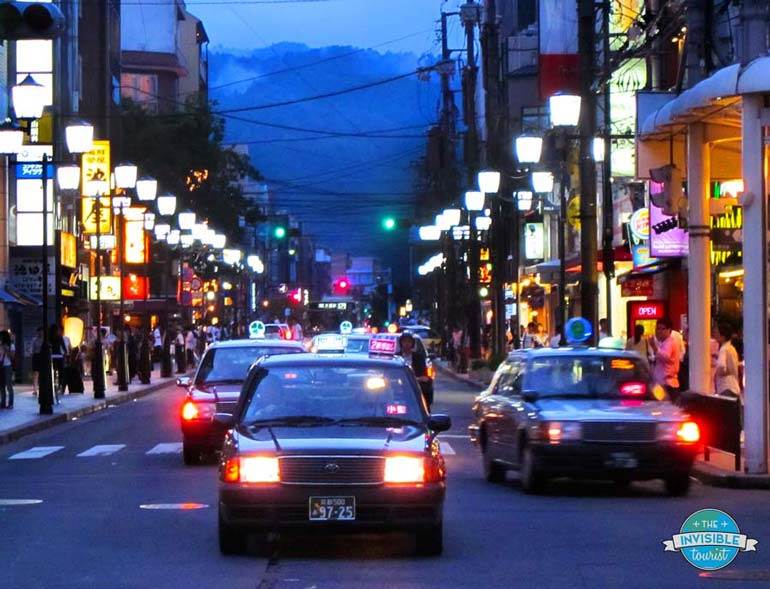
20. Check if you need a visa before you visit Japan
If you're a lucky member of one of these 66 countries, you are not required to obtain a visa before a trip to Japan. Visitors from those 66 countries are allowed to stay in Japan for up to 90 days under the visa waiver agreement.
If you're travelling on a passport from China, Philippines, Indonesia, Vietnam, India, Russia and a few others listed here you will need to obtain a visa from your local embassy first or risk being denied entry into Japan.
21. Purchase travel insurance
As with any trip abroad, it's super important to take out travel insurance before you leave. The islands of Japan were created by volcanic activity and it's important to remember that unforeseen events such as earthquakes can occur from time to time. Make sure you read the fine print to check whether your travel insurance covers these things and more.
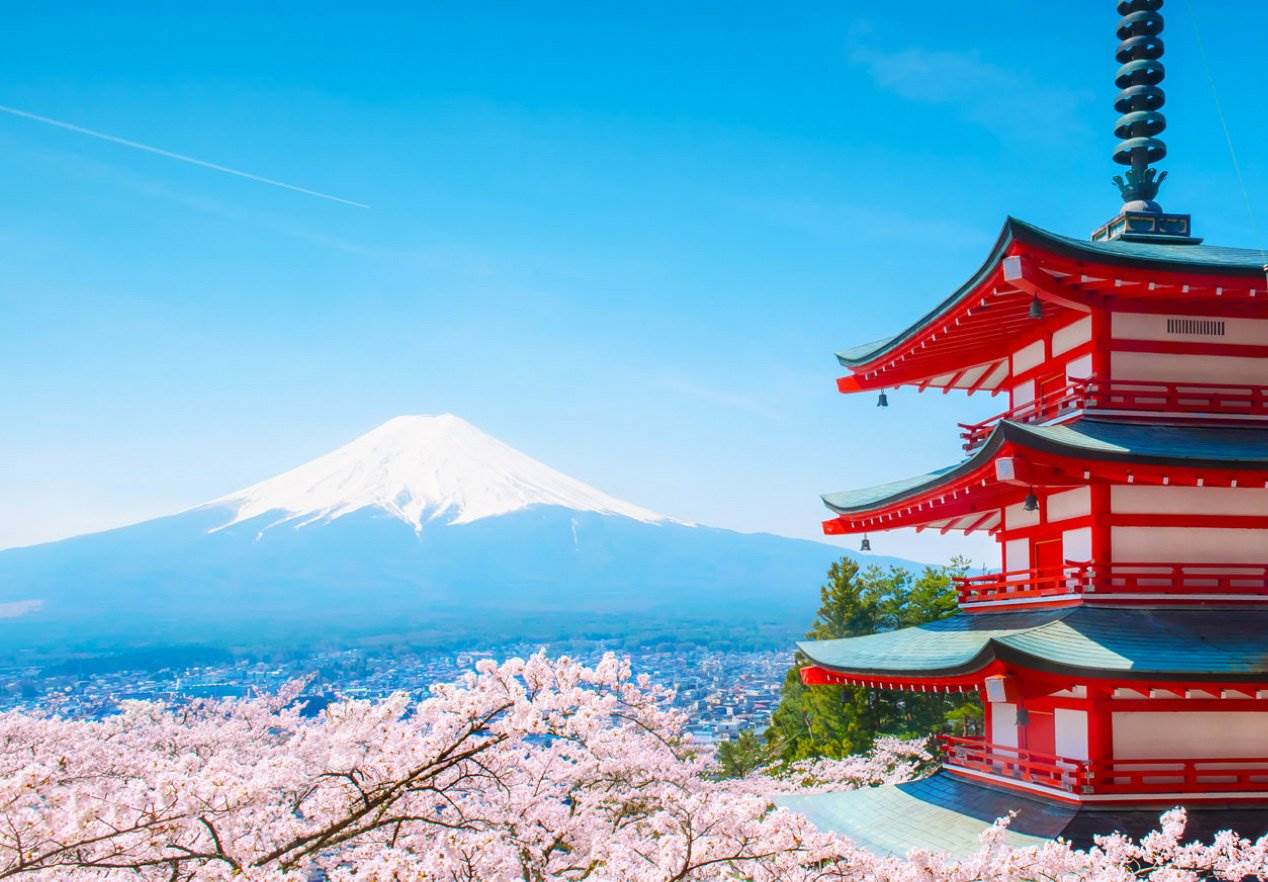
Common questions asked when planning a trip to Japan
Here's some common questions most tourists ask before they start planning a trip to Japan:
How long to travel in Japan?
This is really going to vary from person to person depending on a number of factors, including how much leave you can take from work and your budget. It also depends on the type of traveller you are and how much you want to see!
I firmly believe spending 2 weeks in Japan is a great introduction to this amazing country and with an efficient itinerary it's possible to cover a lot of ground in a relaxed way. 10 days in Japan will also allow you to get a taste for the different regions at a moderate pace, too. If you can spend 3 weeks in Japan, you'll be able to combine the best of the country's Old & New Golden Routes – major cities as well as rural areas.
If you only have one week to spend in Japan, that's completely ok as well, but you may want to stick to only two or three cities. Obviously the longer you stay the more you will be able to see.
Is there a language barrier in Japan?
As mentioned in the points above, I discuss this in more detail in my Japanese phrases for tourists guide. The language barrier in Japan can vary depending on if you're staying in major cities or venturing long distances from major cities such as Tokyo and Osaka.

Should I consider taking a organised Japan tour package?
Depending on your travel style, an organised tour throughout Japan tour may or may not be for you. There are pro's and con's to taking a tour and travelling independently. In my experience, from a cost perspective travelling independently usually works out cheaper.
As mentioned previously, the negative impacts of overtourism in Japan have been coming to light recently, so if you would rather take an organised Japan tour make sure the company supports sustainable tourism by limiting the group sizes to around 12-14 people at most. This will ensure tourism in Japan can benefit both locals and visitors alike. InsideJapan Tours are brilliant in this regard if you prefer not to go it alone.
In saying that, there are always small local organised tours you can take in various cities across Japan. From authentic cooking classes to bar hopping tours, bicycle rides to tea ceremonies, these types of tours help support local businesses and enrich your trip. Find small local tours for your upcoming trip here.
TIP: Small tours are a wonderful way to gain a greater appreciation and understanding of the unique culture in Japan and you might make some new friends as well!

More Japan travel tips: Timeline for planning a trip to Japan
Wondering when you should have all your things organised for Japan? Here's a rough timeline to follow when planning your trip to Japan:
6-12 months to go
- As soon as you book your first flight or accommodation, take out travel insurance. This will ensure you are covered if any unexpected circumstances arise that prevent you taking your trip to Japan after you have already paid money towards it.
- Book your accommodation in popular areas, especially if you're planning a trip to Japan during a busy period such as New Year's, cherry blossom or fall foliage seasons. This helps to get the best deals and avoid missing out on a property you may have your heart set on.
- Ensure your passport has at least 6 months until its expiry from the date you plan to arrive in Japan. It also needs to be valid for the entire duration you're in Japan.
3 months to go
- Ensure you apply for your visa for Japan, if you're required to have one. This process can take a several weeks and shouldn't be left until the last minute.
2 months to go
- Book popular tickets in advance that are likely to sell out closer to the date, like TeamLab Borderless, Robot Restaurant and other tickets I've mentioned in point #5 above.
1 month to go
- Don't forget to order your Japan Rail Pass if you're getting one!
1 week to go
- Make sure you have (or ordered) things you'll need to pack, double-check your travel documents and accommodation confirmations are all in order.
1 day before
- Pack any last minute items you forgot, take a deep breath and get excited for your trip!
Concluding how to plan a trip to Japan
These days it's all too easy to get hung up on the flawless images people splash all over social media about visiting Japan. These highlight reels showcase the splendour of this amazing country in all her glory after all! Although, the harsh truth is being unprepared and setting unrealistic expectations for your trip to Japan is likely to result in disappointment, so it's a good idea to learn some Japan travel tips first.
Now you're equipped with my best advice for planning your trip to Japan, I am confident that YOU will be confident when visiting this incredible country. With a little research, knowledge and planning ahead of time, I hope these tips have help make travel in Japan more simplified – and much less daunting.
Want to learn my strategies for how to "blend in" anywhere around the globe? Find out by reading my #1 Amazon New Release Book!
Have you started planning your trip to Japan? What do you think of these Japan travel tips? Let me know if you have any questions or tips to add in the comments below. As always, if you found this Japan travel guide helpful, please share it with your friends and follow me on Facebook, Pinterest, TikTok or Instagram for more!
Until next time,

Do you love Japanese sweets, snacks and candies?
Read my Tokyo Treat Review and get popular Japanese snacks delivered here, or read my Sakuraco review and get traditional Japanese sweets delivered here!
Like it? Pin it! 📌

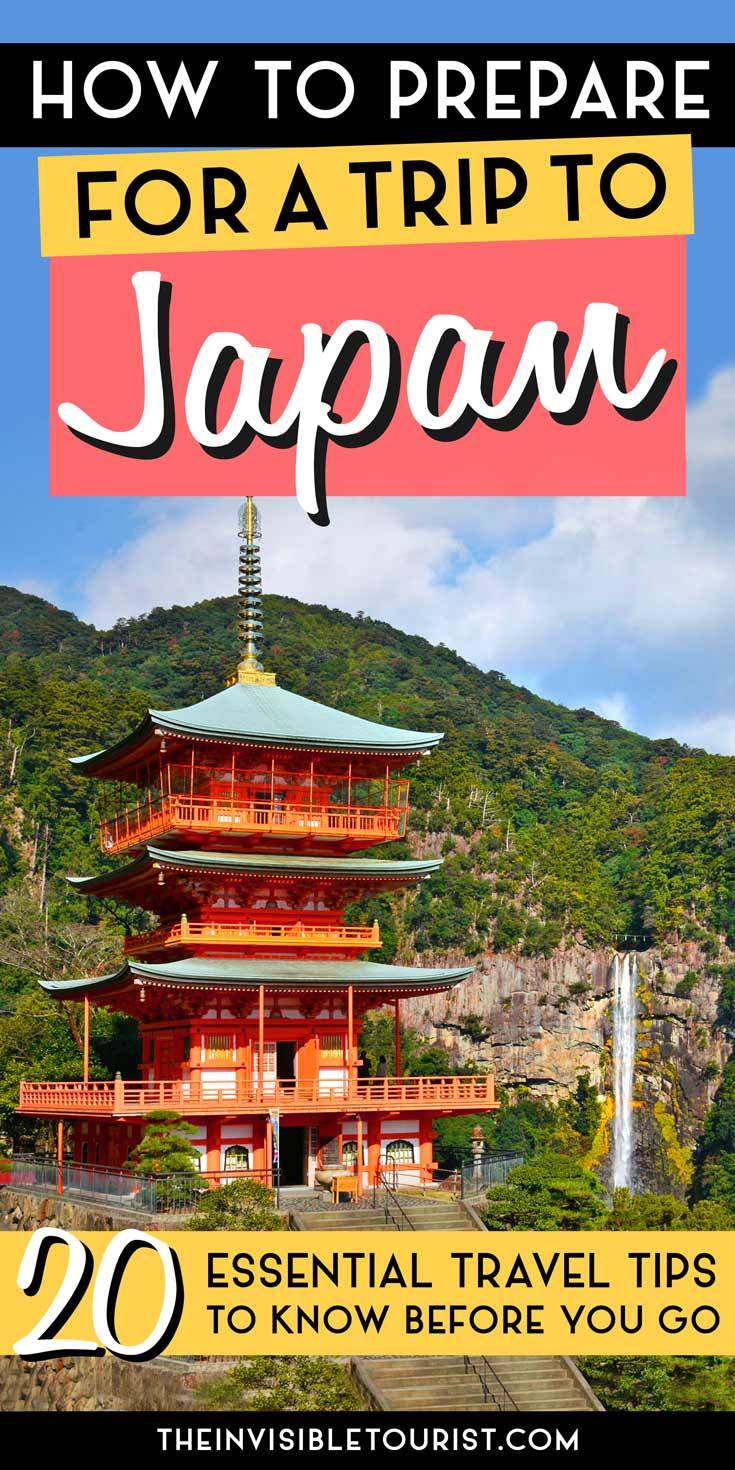
Booking.com
This guide to planning a trip to Japan contains some affiliate links, at no extra cost to you. I may earn a small commission if you decide to make a purchase and if you do, thanks for your support! This helps with the costs of running my travel in Japan blog so I can keep my content free for you. As always, I only recommend a product or service that I genuinely love and use myself!
Source: https://www.theinvisibletourist.com/planning-a-trip-to-japan-travel-tips/
0 Response to "Is It Easy to Travel to Japan"
Publicar un comentario